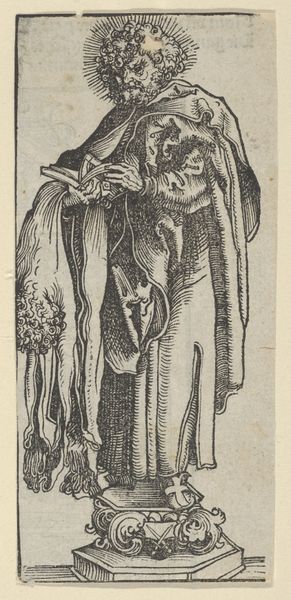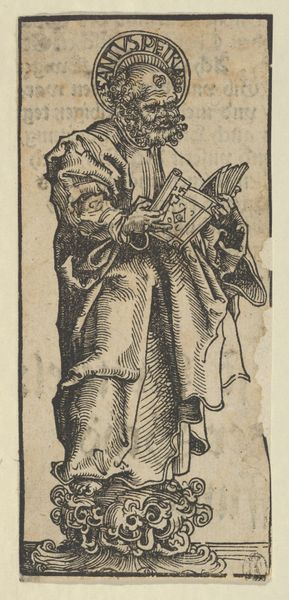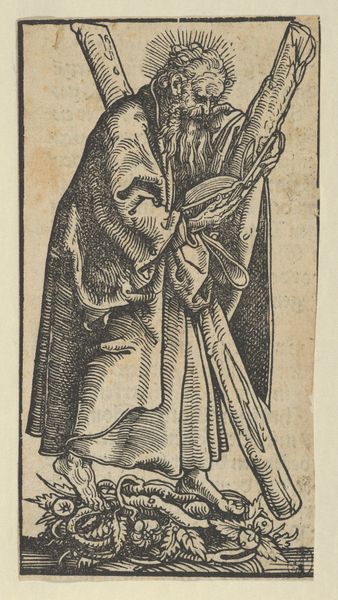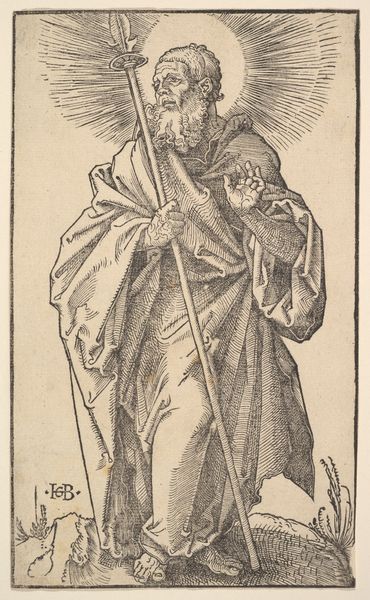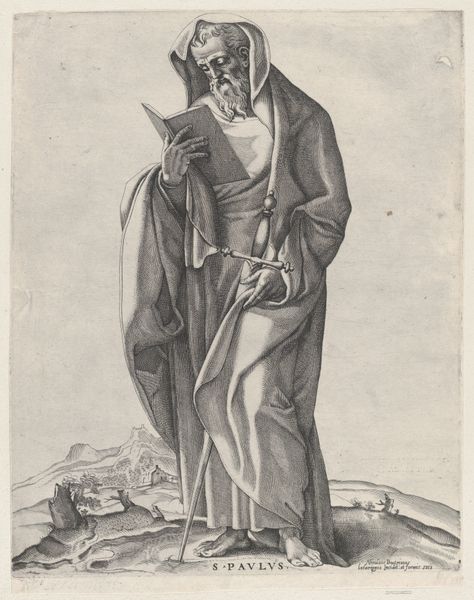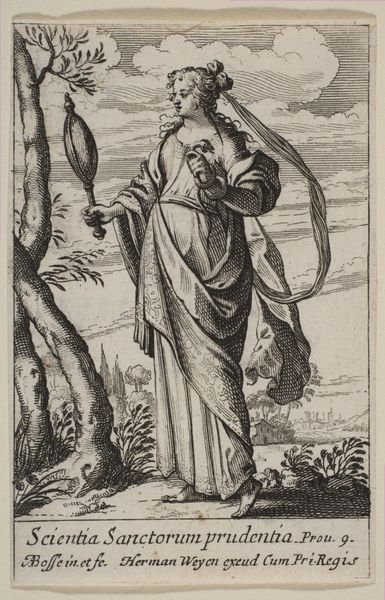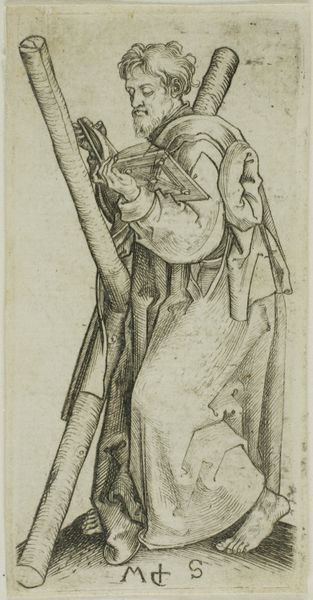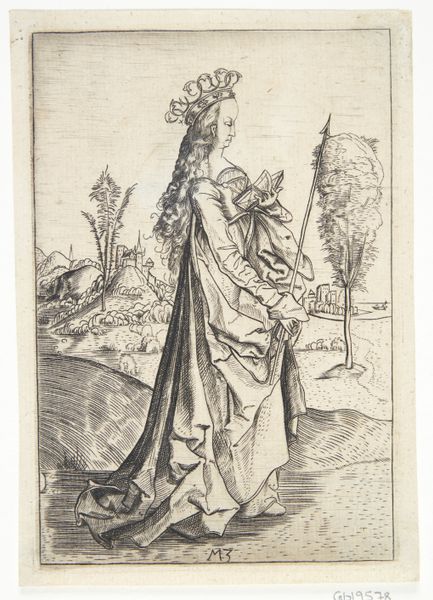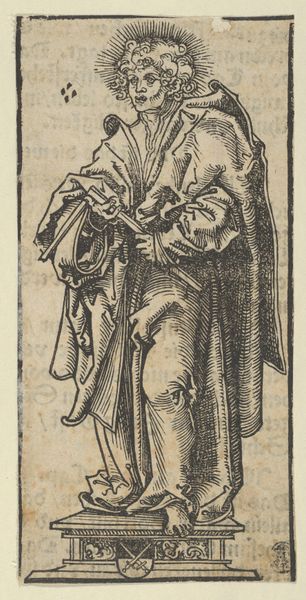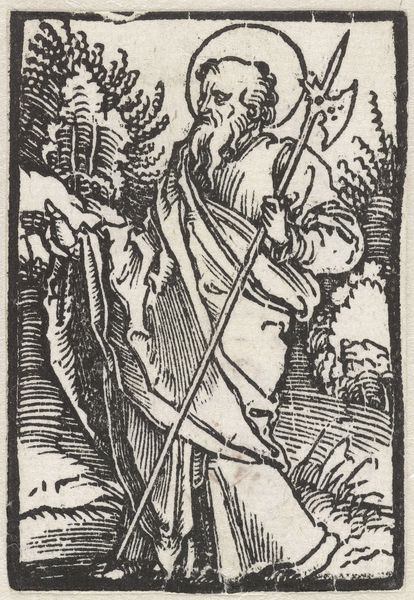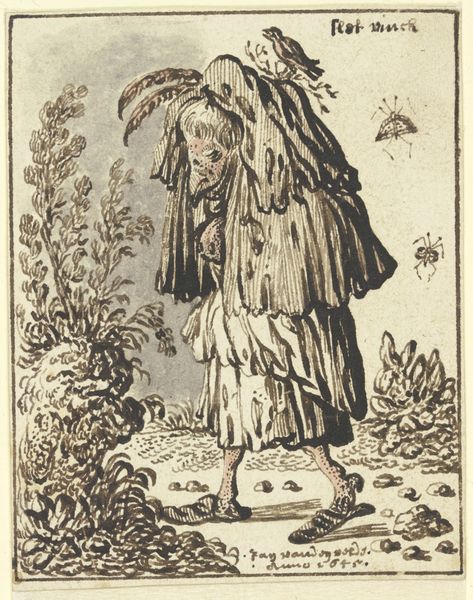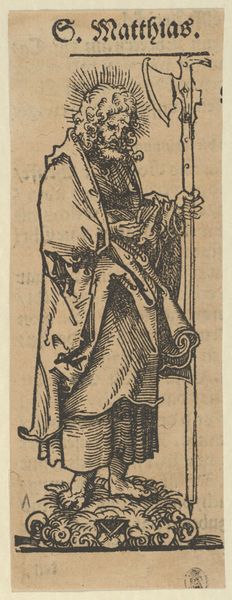
print, engraving
#
portrait
# print
#
figuration
#
11_renaissance
#
pencil drawing
#
engraving
Copyright: National Gallery of Art: CC0 1.0
Curator: Ah, here we have Jean Mignon’s engraving, "Pan," created sometime between 1543 and 1545. Look closely at the detail achieved through the engraving technique. Editor: Wow, talk about a mood. He’s got this intense, slightly melancholic air about him, which clashes wonderfully with the rather whimsical goat legs! There’s something strangely captivating about the way Mignon has blended human and animal features. Curator: Absolutely. We need to remember how central classical mythology was to the Renaissance artistic landscape. Depicting Pan here, Mignon invokes not just the god of the wild but the untamed aspects of human nature, particularly within a Christian context. The composite being reflects deep tensions between spiritual aspirations and earthly drives, ideas very present in Renaissance thinking on the self. Editor: Yes, and this composition feels deliberately disjointed. His body's clearly separated between intellectual pursuits--check the building's architectural feature placed above his head like a mortar board, he could be any professor at the Sorbonne! But at the waist, there's something else going on: pure animal instinct. Almost as if he's been pulled apart. I keep wondering about the panpipes he's carrying, though; I'm trying to understand what he's meant to play, or if the instrument stands only for artifice? Curator: Interesting point. The musical instrument emphasizes creative agency, especially given his composite form which allows us to think about other composite beings like, for instance, the minotaur. The ornament, fruit and garlands around the central figure, adds a level of decorative complexity. If we consider that it’s also likely made to celebrate weddings, we may begin to appreciate its broader intersectional messages related to ideas of pleasure, but also related to class and elite patronage of art in the 16th century. Editor: Well, putting it like that has brought the engraving a whole new context and life. Thanks! Curator: My pleasure! It's amazing how digging into the historical roots helps illuminate art from then, and art from now!
Comments
No comments
Be the first to comment and join the conversation on the ultimate creative platform.
